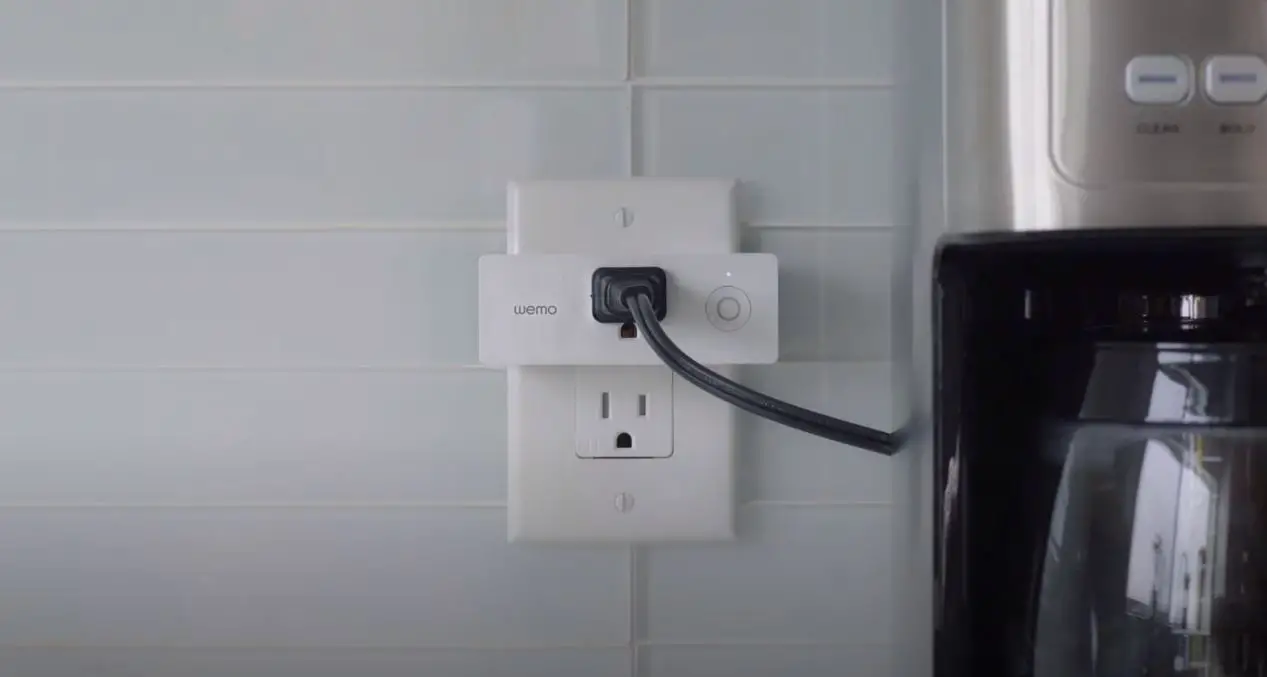Quite a lot of things are being said about electrical issues which gives people concern about how safe and secured is using Wemo into a power strip and other plug-in at home. Being concerned about safety, many wondered on how safe and secured electronic devices are especially when used with a smart plug.
You might be considering whether to plug your Wemo into a power strip. Yes, you can plug a Wemo into a power strip. Your Wemo as well as other smart plugs are safe to use with a power strip as long as you are being mindful of not plugging high power capacity appliances with it on the same power strip.
To ensure that you are using your power strip safely, cross check the power capacity of your power strip with that of your Wemo. Also, you should ensure that anything that you plug with your smart plug should not be more than the maximum power capacity that the power strip can carry.
You can know the appropriate power capacity that is compatible with your smart plug and your power strip to avoid hazard; just check the device manual for its wattage and that of the smart plug can be found on it. This will aid in knowing the total power capacity to plug into your power strip.
Example Use for Wemo Smart Plug Into A Power Strip
Powerstrip -> Wemo Smart Plug -> your Device(TV, Laptop, Coffee Maker)
Wemo smart plug wattage is 1800 and your device that is drawing should be less than 1800.
TV has wattage about 80 to 400 watts depending on the size and technology, expresso machine 1300 Watts, Laptop (50 Watts)
Power Capacity of Device and Smart Plug is The Key
Another way to check the power capacity and the required wattage compatible with your power strip and smart plug is to check online; there are sections that details the required wattage by the manufacturers of those electrical devices and smart plug.
This will help you to choose the right power strip with the required wattage able to carry your electrical devices without posing any hazardous threat.
Smart plugs are designed to be smarter which makes them safer and secured to use and they have the capacity to withstand stress more than what a normal plug would withstand.
This indicates that less wattage, less power and more devices can be used with it when plugged into a power strip so far it is within the required wattage.
Because your smart plug looks bulkier in size, it has a way of occupying more space on your power strip which will help to reduce the number of devices to be plugged with it on the same power strip.
To ensure safe use of your smart plug and power strip, here are some tips to take note of;
- Ensure to plug your power strip on the wall outlet.
- Know the power capacity of your smart plug.
- Know the power capacity of your power strip.
- Avoid plugging many things on one circuit.
- Avoid plugging power strips to another power strip.
- Ensure to unplug any devices that is not in use.
- When power strip is not in use, turn it off.
However, you can consider some safety tips for your Wemo smart plug if you do not want to use it with a power strip.
- Plug your Wemo smart plug directly into the wall outlet.
- Ensure that your Wemo smart plug is rightly/perfectly plugged into the wall outlet and not loosely plugged.
- Be cautious of any wear or damage on your wall outlet before plugging your Wemo device. In case of any damage on your wall outlet, contact your electrician.
- Crosscheck the power capacity of your Wemo device with that of any device you wish to connect with it. Ensure that the power capacity is compatible and do not exceed the maximum requirement of your Wemo device.
- Your Wemo device is designed for residential purpose and usage and should be used indoor.
- When placing your Wemo device behind house furniture, ensure that there are some spaces left between the furniture and your Wemo device.
- The power specification and safety instruction for your Wemo device can be found on the product sticker and ensure that you fully understand the instructions before using your device.
Placing Wemo on Power Strip Helps to Have Surge Protection to the Smart Plug
Not all electronics have surge protection built-in in them, but you can find some power strips that have surge protection in them.
Some of the power strips that have a light labelled ‘surge’ on them shows that it has a surge protector but if otherwise, that means that the strip doesn’t have a surge protector. It is the light that indicate that the surge protection in the power strip is in function.
Such surge protector on power strip can be destroyed if it is affected with a large voltage spike and then reduce your power strip to its ordinary operation. Moreover, some power strip comes with light labelled ‘surge’ without providing the required protection.
Such light will just be on when the power strip is on without functioning. This indicates that depending on power strips for surge protection is not always reliable.
If you are thinking that placing Wemo on power strip will provide surge protection for it, you might be wrong. Your power strip may not provide the surge protection needed for your Wemo device because not all the power strips provide surge protection.
Otherwise, you can opt in for surge protectors that has the ability to provide defence against voltage spike which have the tendency to damage your device.
Surge protectors are designed to protect your devices from any surges that can occur due to voltage spike which may cause damage to your appliance/equipment connected to it.
Also, ensure that you do not exceed the maximum wattage limitations found on your surge protector to avoid hazard.
What You Should Not Plug Into a Power Strip?
Several hazards have been recorded with the misuse of power strip, more than 3,000 houses catch fire yearly and about 50 individuals die with over 250 injuries. All these are as a result of misuse of power strip.
Read this article on using wemo smart plug outside
Below is the list of things not to plug into a power strip for safety reasons.
- Freezer and Refrigerator
- Toaster
- Space heater
- Microwave oven
- Hair care appliances
- Coffee maker
- Slow cookers and Hot plates
- Portable heaters
- Air Conditioners
- Sump Pumps
- Another power strip
Do Power Strips Cause Fire?
Proper use of power strip does not have the tendency of causing fire hazard. However, overloading and improper use can result in electrical failure and can as well result in fire hazard.
Overloading occurs when more than one power strips are connected together and plugged into the same wall outlet.
Also, plugging high power capacity devices into a power strip too can cause fire hazard which is as a result of overheating, such devices should be plugged directly into a wall outlet.
When you exceed the power capacity of a power strip some likely resultant effect include:
- Electrical malfunction
- Electrical shock
- Electrical explosion
- Melting of the surface area
- Fire
Another sign that indicate over usage of power is if the plug trips the breaker continuously and leads to power outage.
Most times, the plugin plastics will melt within and has burn marks on it, this effect shows that you have exceeded the maximum power usage.
To prevent electrical problems, you can unplug some devices on the power strip to reduce the amount of energy used and avoid the danger it may cause.
Using a device for a very long period of time may result in malfunctioning which can as well cause hazard. More cautious actions need to be taken and one need to consider replacing power strip for safety if is being used for a very long time.
Take Away From This Article
You can use Wemo smart plug on power strip, but ensure you follow all safety precautions. Aside appropriately using the power strip to avoid hazard, proper measures should be put in place to avoid being overused. Outdated, overpowered or misuse power strip are the major cause of fire outbreaks resulted from this device. You can be sure of a safe and smart homes when you use your power strip appropriately.

Sam has been a Smart Things expert for years and the author of DIY SmartThings. Recently he’s really more into Nest smart devices and has a lot of experience with all sorts of projects from converting a regular Home to completely a smart home with the background degree in Electronics.
